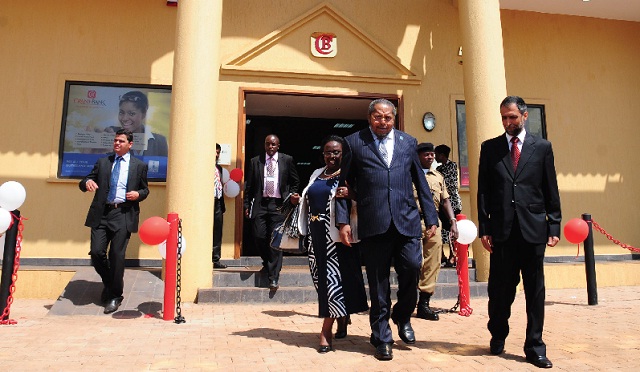
Kampala, Uganda | HAGGAI MATSIKO | The cost of taking over Crane Bank continues to skyrocket and could hit way over Shs. 500 Bn, The Independent can exclusively report.
The latest revelations indicate that the lawyers, who represented Bank of Uganda in the entire process of taking over Crane Bank and selling it to DFCU Bank, have slapped the bank with a bill of about Shs.30bn.This is over and above what they had already earned.
BoU had already spentShs. 478bn on the entire process of taking over and then selling Crane Bank to DFCU Bank according to thean August report by Auditor General John Muwanga. The same report shows that part of this cash went to audit firms—KPMG and PWC—and the law firm MMAKS led by Timothy MasembeKanyerezi— who is highly connected to senior officials at BoU.
In total, the latest figures indicated that BoUcould spend well over Shs.500bn on settling Crane Bank matters, the same bank they sold to DFCU at Shs200 billion. Tycoon SudhirRuparelia who owned the back valued it at Shs1.3 trillion. Publicly, BoU officials claimed that when the central bank resolved Crane Bank, the value of its assets was much less than the value of its liabilities.
And that Crane Bank had a negative net worth—was insolvent.
But the Auditor General’s report highlights on central element, which calls into question these claims by the central bank.
The auditor general notes that BoU did not carry out a valuation of the assets and liabilities of CBL before selling them.
“In absence of the valuation,” Muwanga notes in the report, “I could not establish how the terms for the transfer of assets and liabilities in the Purchase of Assets and Assumption of Liabilities were determined.”
In a Sept.18 statement in Daily Monitor Central Governor Emmanuel TumusiimeMutebile defended the expenditure on Crane Bank.
“This was the cost of ensuring that Crane Bank did not collapse in a disorderly manner, threatening chaos in the banking system and the wider economy and ensuring that its customers retained access to their deposits and to banking services,” reads Governor Mutebile’s statement.
The Governor did not address the other questions raised by the auditor General’s report.
Part of the reason is that Governor Mutebile is just managing the bank’s public image. Even though he knows the answers to these questions, he cannot give them.
The truth is that his team let him down, at least going by multiple internal memos reviewed by The Independent and his decision to fire then Executive Director Banking Supervision, Justine Bagyenda. At the time of the troubles of Crane Bank, Governor Mutebile was unwell. He relied on Bagyenda and her deputy Benedict Sekabila, who were at the time being supervised by Deputy Governor Louis Kasekende.
For several months now, The Independent has reviewed hundreds of correspondences surrounding the closure and eventual sell of Crane Bank and can authoritatively report that in almost 90 percent of these, Bagyenda directly handled all the directives around Crane Bank.
Bagyendahired the audit and law firms like MMAKs, which she had appointed as the Transaction advisor.
The latest revelations are particularly interesting because, as a result of the expenditure on the Crane Bank, the central bank’s capital was wiped out forcing government to inject in more money.
BoU officials say this is a smaller price to pay compared to a scenario where the collapse of Uganda’s third biggest bank destabilised the entire financial sector. Critics say the expenditure shows that BoU mismanaged the whole Crane Bank affair – the same way it had mismanaged the closure and sell of other banks.
BoU officially took over Crane Bank accusing its proprietor SudhirRuparelia of fraud, which they said had put depositors money at risk. A year later, they sold the Bank to DFCU in a controversial 200 billion deal.
 The Independent Uganda: You get the Truth we Pay the Price
The Independent Uganda: You get the Truth we Pay the Price


